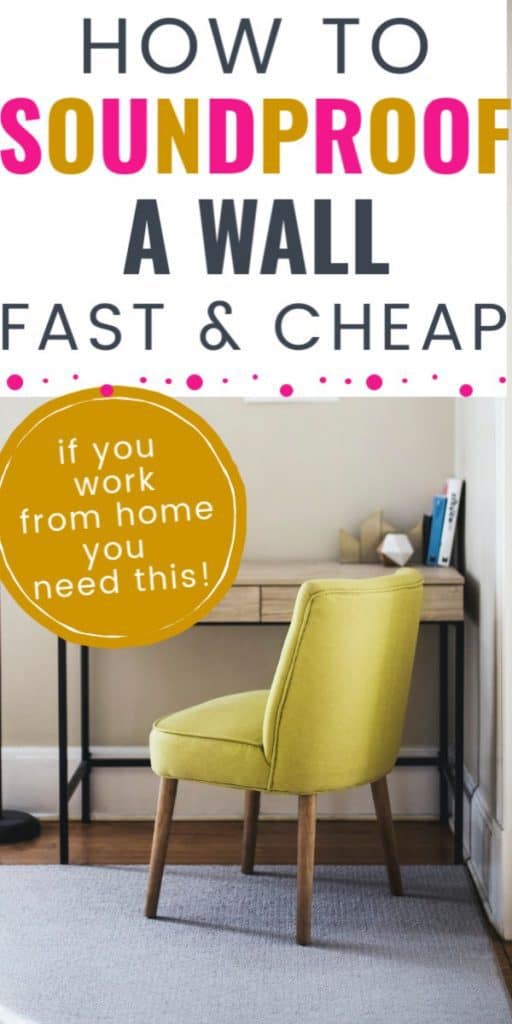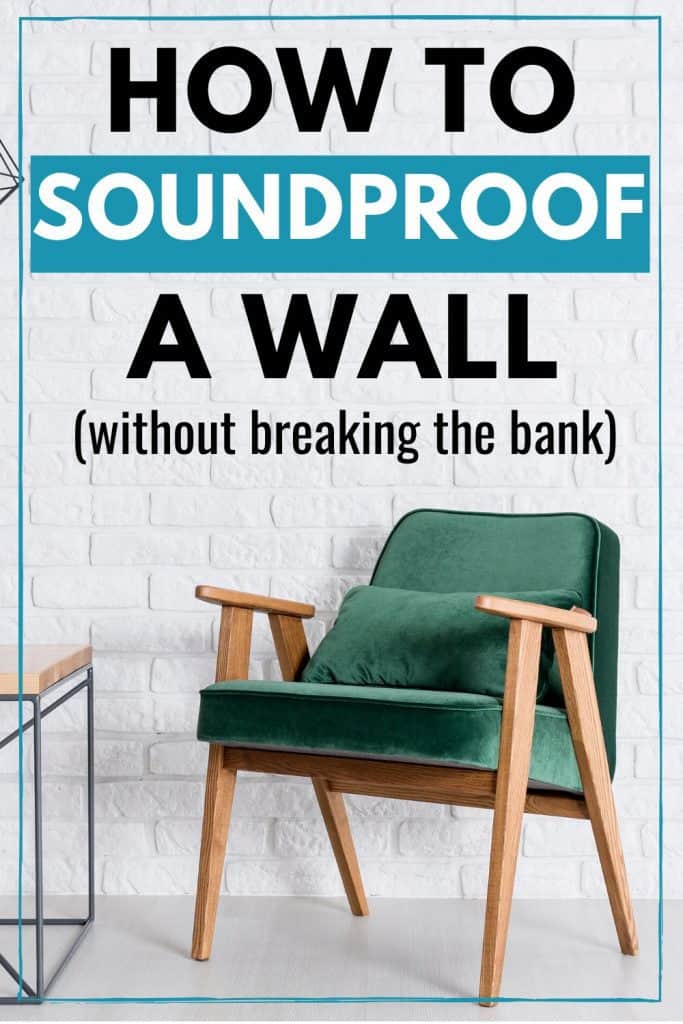There are various reasons might want to soundproof a wall or a room. After the COVID situation worldwide, there is a good chance you or your neighbors might still be working from home, and you might be as well.
If you’ve got kids or housemates, and you also constantly are having guests at home, then you’re probably going to need peace and quiet, and thus, you’ll need to soundproof your walls!
Soundproofing already existing walls sounds like a daunting task, but it does not have to be complicated or break the bank. If you’re in desperate need of some peace and quiet, keep reading to learn how to soundproof a wall cheaply.
How to Soundproof a Wall Cheaply
Find Where Noise is Coming From

The first thing you should try to locate when it comes to soundproofing your walls, is finding any weak points where the noise is coming from.
This evaluation will help you to determine what the best approach to take is, as well as what materials you may want to use.
You will also want to determine what type of noise you are experiencing.
There are two main types of noise:
- airborne noise
- impact noise
Airborne noise is when sound is transmitted through the air.
Impact noises typically have lower frequencies and this makes it easier for them to pass through walls or windows.
Rearrange The Furniture

This option requires no money, making it the cheapest way to help soundproof a wall. Simply use your already existing furniture strategically, in order to create sound blocks.
To accomplish this, you will want to add in as much furniture as you can into one room. The emptier a room is, the more it has the potential to echo and pick up on sounds.
A large bookshelf filled with books can help mitigate the noise.
While you may be thinking that soundproofing a wall requires you put your furniture on your noisy wall, you would actually be incorrect. This will actually worsen the problem! If you have a shared wall in your home or apartment, place furniture on the opposite wall or not up against a wall at all.
Strategically Decorate
Whatever you decide to place on your wall will give your wall mass, which will help with soundproofing.
However, different materials may provide you with a different advantage. If your walls are bare, consider applying a few coats of paint or put up some wallpaper.
Hang up a few paintings or make your own artwork to hang on the walls.
Soundproofing Blankets
Another popular option is hanging up quilts or blankets. These are thicker and will provide more soundproofing than an art print on the wall.
Regular blankets can provide some amount of soundproofing, but soundproofing blankets are going to be the most effective, as they are specifically designed to soundproof walls.
The thicker the material is and the more wall coverage it provides, the better it will work for your soundproofing efforts.

This is not the most visually-appealing option, but it may be the one that works for some.
Foam Panels
Foam panels are often disregarded as people (mistakenly) believe they’re too expensive and challenging to install.
However, the process is relatively simple and gives you a professional solution, similar to what is used in a recording studio.
These soundproof foam panels have a self-adhesive glue stick and peel backing, making them easy to install and providing a simple, cost-effective wall soundproofing solution.

Acoustic Fabric Panels
Acoustic fabric panels are a more attractive alternative to foam panels, for those who are wanting something more aesthetically pleasing. They’re slightly more expensive but just as effective at blocking sound.
Acoustic fabric panels come in a variety of colors to match any color scheme, and are simple to install with spray adhesive or 3M double sided tape, making them a perfect option for renters.
Seal Cracks
If your drywall is cracked or falling apart, that might be one reason your experiencing a high level of noise. There are different materials that will allow you to seal your drywall if that is the case.
Using specific acoustic caulk is designed for soundproofing is the best option. Acoustic caulk is made of a rubbery material that allows it to hold shape, meaning it will not shrink or crack over time.
Be careful and direct when working with acoustic caulk, as it is a permanent solution. While it is not difficult to apply, especially with the use of a caulk gun, make sure you are in a well-ventilated area when applying it.
Sound-Reducing Curtains
The final solution for soundproofing your walls is to install sound-reducing curtains, which look just look regular curtains but have special sound-reducing abilities.
You’re probably thinking “aren’t curtains for windows?” Yes, of course you can (and probably should) use soundproof curtains for your windows, if you truly want a quiet room.
But you can also hang soundproof curtains on your walls. You’ll need to install a curtain rod to hang them, so acoustic fabric panels are a better option. But if you’d prefer not to stick anything on your walls, then soundproof curtains are a good alternative.
Now You’re Ready to Soundproof Your Walls Cheaply
Thin walls are a recipe for disaster, especially if you’re working from home or just love peace and quiet (which is most of us, right?)
Some houses are constructed with poorly insulated or thin walls, leading to potential noise problems that cause a headache for homeowners. Take into account that you may need to mix several options to accomplish having the quiet place you want.
Even if you are on a tight budget, there are options – soundproofing your walls does not have to be expensive or challenging. And best of all, all of the options listed above can be easily installed in a day or less.

Hi I’m Ana. I’m all about trying to live the best life you can. This blog is all about working to become physically healthy, mentally healthy and financially free! There lots of DIY tips, personal finance tips and just general tips on how to live the best life.





Leave a Reply